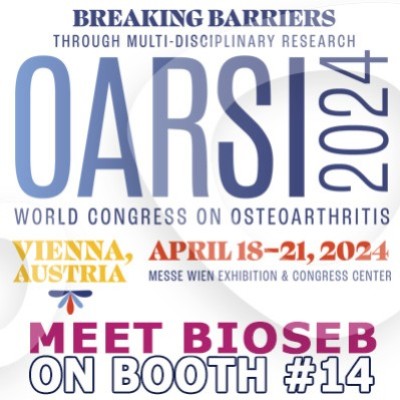Authors
Feng K, Yu Y, Chen Z, Wang F, Zhang K, Chen H, Xu J, Kang Q
Lab
Shanghai Jiao Tong University School of Medicine, Shanghai, 200233, China.
Journal
Mater Today Bio
Abstract
Osteoarthritis (OA) is the most common age-related degenerative joint disease mainly characterized by the destruction of articular cartilage. Owing to its native avascular property, intrinsic repair of articular cartilage is very limited. Thus, a chondrogenic microenvironment in the joint is essential to the preservation of healthy chondrocytes and OA treatment. Recently, cartilage progenitor cells (CPCs)-based therapy is emerging as a promising strategy to repair degenerated and damaged articular cartilage. In this study, injectable hypoxia-preconditioned three-dimensional (3D) cultured CPCs-laden gelatin methacryloyl (GelMA) microspheres (CGMs) were constructed and characterized. Compared to normoxia-pretreated 3D CPCs and two-dimensional (2D) cultured CPCs, hypoxia-preconditioned 3D cultured CPCs exhibited enhanced cartilage extracellular matrix (ECM) secretion and greater chondrogenic ability. In addition, hypoxia-preconditioned 3D cultured CPCs more effectively maintained cartilage matrix metabolism balance and attenuated articular cartilage degeneration in subacute and chronic rat OA models. Mechanistically, our results demonstrated hypoxia-preconditioned 3D cultured CPCs exerted chondro-protective effects by inhibiting inflammation and oxidative stress via NRF2/HO-1 pathway in vitro and in vivo. Together, through the 3D culture of CPCs using GelMA microspheres (GMs) under hypoxia environment, our results proposed an efficient articular cartilage regeneration strategy for OA treatment and could provide inspiration for other stem cells-based therapies.
BIOSEB Instruments Used:
Electronic Von Frey - Wireless (BIO-EVF-WRS)

 Pain - Thermal Allodynia / Hyperalgesia
Pain - Thermal Allodynia / Hyperalgesia Pain - Spontaneous Pain - Postural Deficit
Pain - Spontaneous Pain - Postural Deficit Pain - Mechanical Allodynia / Hyperalgesia
Pain - Mechanical Allodynia / Hyperalgesia Learning/Memory - Attention - Addiction
Learning/Memory - Attention - Addiction Physiology & Respiratory Research
Physiology & Respiratory Research
 Pain
Pain Metabolism
Metabolism Motor control
Motor control Neurodegeneration
Neurodegeneration Cross-disciplinary subjects
Cross-disciplinary subjects Muscular system
Muscular system General activity
General activity Mood Disorders
Mood Disorders Other disorders
Other disorders Joints
Joints Central Nervous System (CNS)
Central Nervous System (CNS) Sensory system
Sensory system Bioseb on booth #14 at OARSI 2024 in Vienna
Bioseb on booth #14 at OARSI 2024 in Vienna 